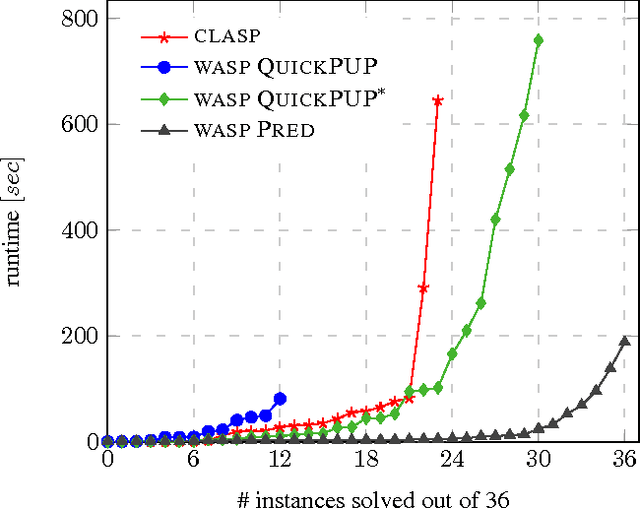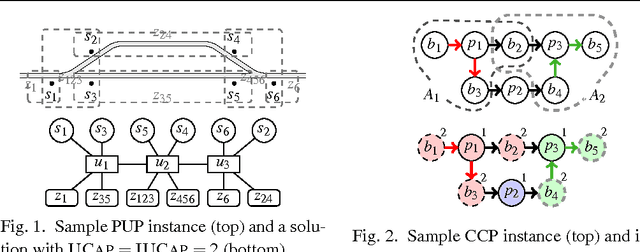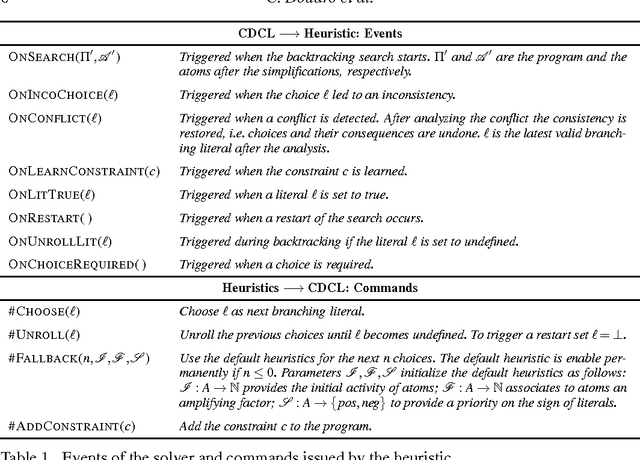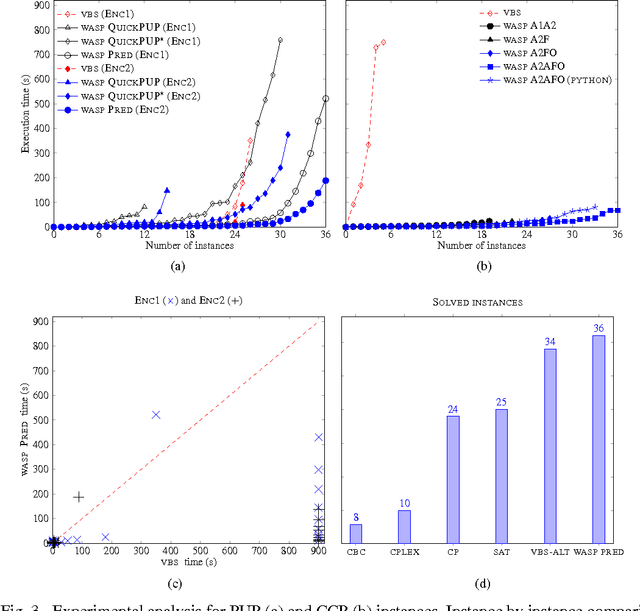Philip Gasteiger
Debugging Non-Ground ASP Programs: Technique and Graphical Tools
Aug 01, 2018



Abstract:Answer Set Programming (ASP) is one of the major declarative programming paradigms in the area of logic programming and non-monotonic reasoning. Despite that ASP features a simple syntax and an intuitive semantics, errors are common during the development of ASP programs. In this paper we propose a novel debugging approach allowing for interactive localization of bugs in non-ground programs. The new approach points the user directly to a set of non-ground rules involved in the bug, which might be refined (up to the point in which the bug is easily identified) by asking the programmer a sequence of questions on an expected answer set. The approach has been implemented on top of the ASP solver WASP. The resulting debugger has been complemented by a user-friendly graphical interface, and integrated in ASPIDE, a rich IDE for answer set programs. In addition, an empirical analysis shows that the new debugger is not affected by the grounding blowup limiting the application of previous approaches based on meta-programming. Under consideration in Theory and Practice of Logic Programming (TPLP).
Driving CDCL Search
Nov 16, 2016



Abstract:The CDCL algorithm is the leading solution adopted by state-of-the-art solvers for SAT, SMT, ASP, and others. Experiments show that the performance of CDCL solvers can be significantly boosted by embedding domain-specific heuristics, especially on large real-world problems. However, a proper integration of such criteria in off-the-shelf CDCL implementations is not obvious. In this paper, we distill the key ingredients that drive the search of CDCL solvers, and propose a general framework for designing and implementing new heuristics. We implemented our strategy in an ASP solver, and we experimented on two industrial domains. On hard problem instances, state-of-the-art implementations fail to find any solution in acceptable time, whereas our implementation is very successful and finds all solutions.
An integrated Graphical User Interface for Debugging Answer Set Programs
Nov 15, 2016



Abstract:Answer Set Programming (ASP) is an expressive knowledge representation and reasoning framework. Due to its rather simple syntax paired with high-performance solvers, ASP is interesting for industrial applications. However, to err is human and thus debugging is an important activity during the development process. Therefore, tools for debugging non-ground answer set programs are needed. In this paper, we present a new graphical debugging interface for non-ground answer set programs. The tool is based on the recently-introduced DWASP approach for debugging and it simplifies the interaction with the debugger. Furthermore, the debugging interface is integrated in ASPIDE, a rich IDE for answer set programs. With our extension ASPIDE turns into a full-fledged IDE by offering debugging support.
Combining Answer Set Programming and Domain Heuristics for Solving Hard Industrial Problems (Application Paper)
Aug 02, 2016


Abstract:Answer Set Programming (ASP) is a popular logic programming paradigm that has been applied for solving a variety of complex problems. Among the most challenging real-world applications of ASP are two industrial problems defined by Siemens: the Partner Units Problem (PUP) and the Combined Configuration Problem (CCP). The hardest instances of PUP and CCP are out of reach for state-of-the-art ASP solvers. Experiments show that the performance of ASP solvers could be significantly improved by embedding domain-specific heuristics, but a proper effective integration of such criteria in off-the-shelf ASP implementations is not obvious. In this paper the combination of ASP and domain-specific heuristics is studied with the goal of effectively solving real-world problem instances of PUP and CCP. As a byproduct of this activity, the ASP solver WASP was extended with an interface that eases embedding new external heuristics in the solver. The evaluation shows that our domain-heuristic-driven ASP solver finds solutions for all the real-world instances of PUP and CCP ever provided by Siemens. This paper is under consideration for acceptance in TPLP.
 Add to Chrome
Add to Chrome Add to Firefox
Add to Firefox Add to Edge
Add to Edge